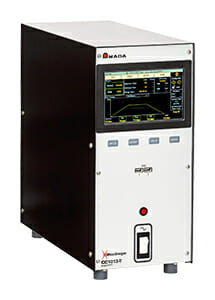Micro welding equipment can increase quality and yield with process control
By Mr. Richard Barber, Engineering Manager, Amada Miyachi UK
Whether manufacturing sensors for use in high-value, low-volume handmade devices or for highly cost-sensitive mass-produced items, manufacturers are experiencing more pressure to deliver higher quality than in the past. Performance and operational expectations delivered in aerospace and medical manufacturing are becoming increasingly commonplace, even in general industry applications. In response, sensor design and production engineers must re-evaluate current methods, and seek to integrate assembly best practices. Indeed, as manufacturers look for a competitive advantage, sensor quality and robustness gained from the assembly process is now as much a key selling point as device functionality. For many manufacturers, taking advantage of modern micro welding techniques can offer a range of benefits to sensor assembly – including tight process control.
Sensor manufacturing technologies
Of course, micro welding is not the only technology available for sensor manufacturing. Solder remains a popular option, but the downsides are many. Determining long-term joint integrity presents one major challenge when using solder, as does process monitoring. Furthermore, the method entails relatively high temperature stresses at and around joints. The presence of fumes as well as limitations on process speed also make the technology less than ideal.
Of micro welding technologies, micro resistance welding is the more common method. Micro resistance welding has been used for years for making joints and consolidating flexible stranded wires into a solid block. Still, more recent quality demands and the desire for higher yield means manufacturers have to pay greater attention to process measurement when using this method. Capacitor Discharge and AC welders remain suitable for a number of applications, but some manufacturers with older weld heads and older CD or AC equipment are investing in newer technology – particularly when legacy gear fails to accommodate appropriate process measurement.






